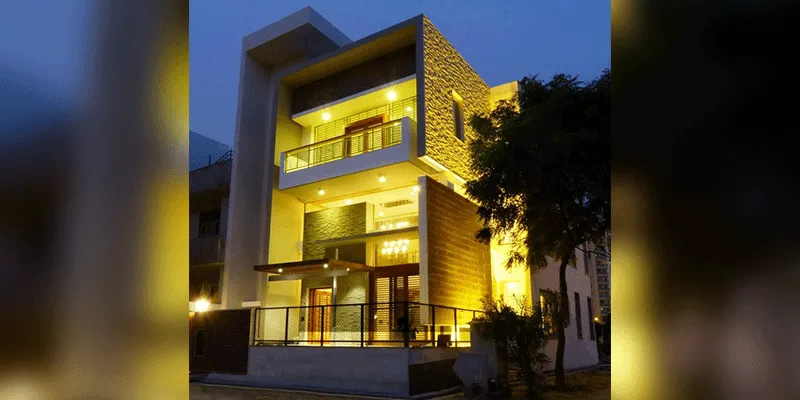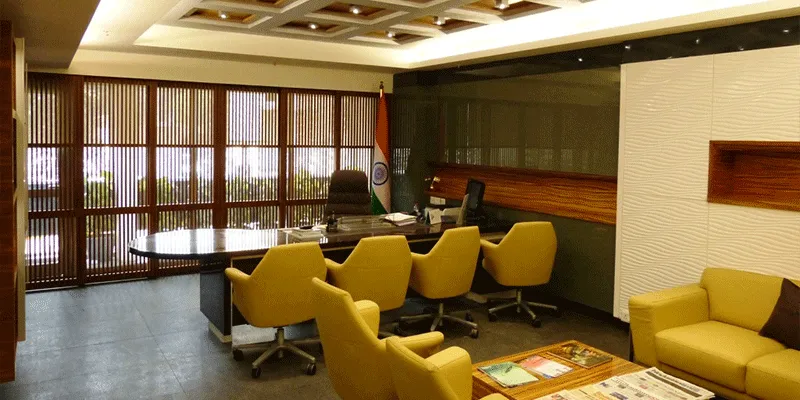Need a new workspace? Meet the architects who remodel homes to double as offices
Pooja Narayan, Vivian Vickers and Pernika Narayan of Narayan Bansal Mathur Associates (NBMA) who design home offices to meet personal requirements and suit your style
Juggling work from home brings along its own challenges besides managing online schooling of children and attending doorbells.
Space is one such challenge. Ever faced the issue of finding that ideal space while participating in a webinar or a video call? Well, you are not alone; the pandemic has brought upon many changes in the way we used to work.

Many homes have special workspaces in order to enable work from home
With sudden multiple lockdowns across the county, most businesses wanting to ensure business continuity, without missing out on precious time, shifted to work from home arrangements. So, how does one accommodate the office seamlessly from the comfort of one’s respective home?
This pandemic has shown us in no uncertain terms, that our homes are indeed our haven - of safety and comfort and to understand the top trends about remodelling, we spoke to Pooja Narayan and Vivian Vickers of Narayan Bansal Mathur Associates (NBMA), a five-decade-old design and architecture firm.

Pooja Narayan, Vivian Vickers and Pernika Narayan
Keep rooms clutter-free
"One of the most important things is to ensure that each member of the household has a distinct workspace, without any overlap between children's study tables and parents’ workspaces. This will ensure that online classes can carry on smoothly while parents are in a video call without any disturbances," tells Pooja an alumnus of the acclaimed Bartlett School of Architecture, UCL, London.
The pandemic has certainly created a restriction on movement and physical meetings. But thanks to technology, our interactions with team members and clients can continue without interruption.
When asked about the design elements to consider while working from home, Pooja says, "Since most of our time is spent indoors glued to our respective screens, it is as important to have a clutter-free, cheerful and inviting space to work along with an ergonomically appropriate chair and maintain a fixed schedule for work.
One could add a touch of colour with a potted plant, a coffee mug or some photographs, artworks and books to personalise the space, as these objects can act as stress busters."
Make spaces flexible
While it is essential to create a home office so that there can be a clear demarcation between the work and life at home, one should also consider the visual character of the space, keeping in mind the circulation routes inside the home and the ambient noise, especially for people who are often on video calls.
Today, people are looking to create flexible spaces instead of fixed spaces.
"In times like this, we need to reassess the spaces available to us. Since the need to entertain is now minimised, the dining room need not remain a dining room and can be converted into a daytime workspace for one of the working spouses with new-age furniture such as tables with tucked away seating," says Vivian Vickers, the problem-solver in the team.
Past experiences

Spaces should be flexible in a home office
Throughout their practice, the NBMA team has designed workspaces of different kinds - from CMD suites to corporate offices to bespoke boutique offices, each different from the other depending on the nature of work, organisation culture, aspiration, and interactions.
Speaking about an experience with LawFirst, a law firm, Vivian shares, "We created a luxurious and spacious workplace within the same footprint by reinventing the way they met clients and the way they did their work. We made optimum use of available technology by creating multiple experiences in the same space.”
“Eventually all our plans fell in place, much to our delight," adds Pernika, who is an alumnus of the Delhi School of Planning and Architecture.
Redesign workspaces for efficiency
"It helps that a lot of people are well-travelled, watch trendy shows and have a lot of ideas about what they like and what they aspire for. Technology has helped us immensely especially while working remotely,” says Pooja.
Having a professional agency on board always brings in the quality-first approach and an element of assurance, that the work will get done just right without disrupting the clients’ lives and businesses.
A successful project is all about working closely with the client and understanding the spoken as well as the unspoken needs of a client in order to create a rewarding experience. Working with architects, interior and space designers brings in an element of certainty to the home offices which could be used in a functional way, once redesigned.
“One of the challenges which people face is that they cannot visualise how something on paper will translate into a physical actuality,” says Vivian. “We use 3D sketches, computer-generated images and photographs of completed projects from the same angles as of the 3D images to help clients imagine their new space in all actuality.”
Edited by Asha Chowdary









